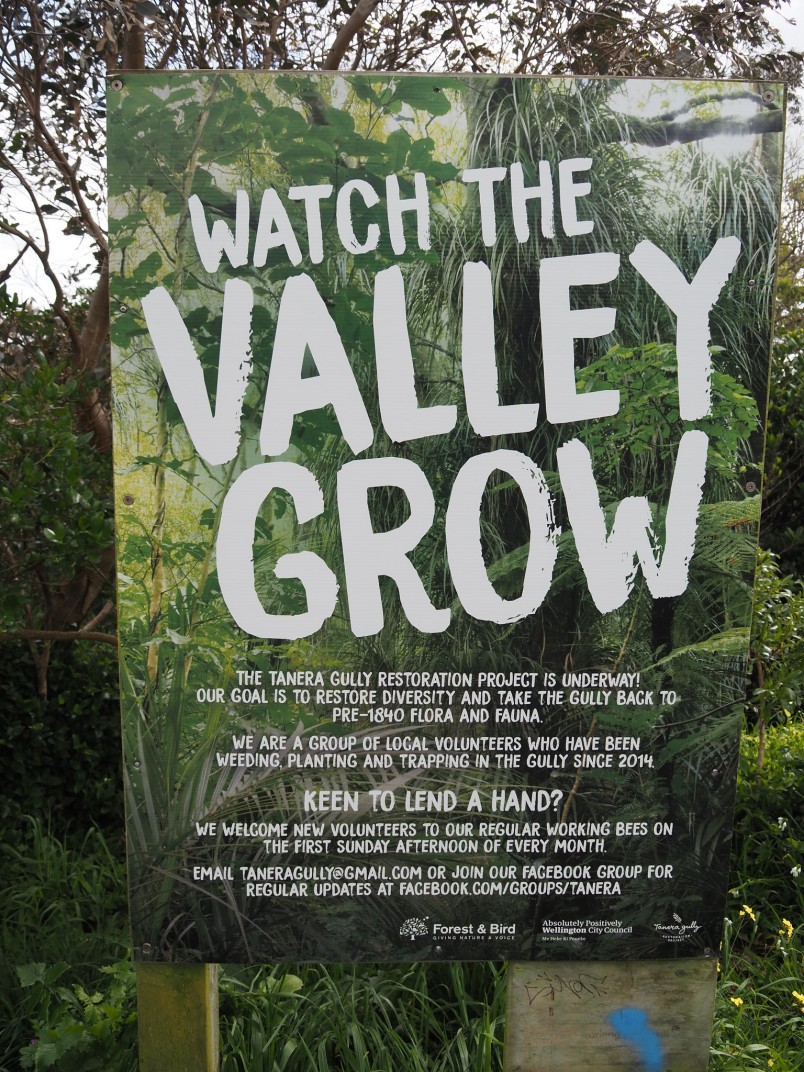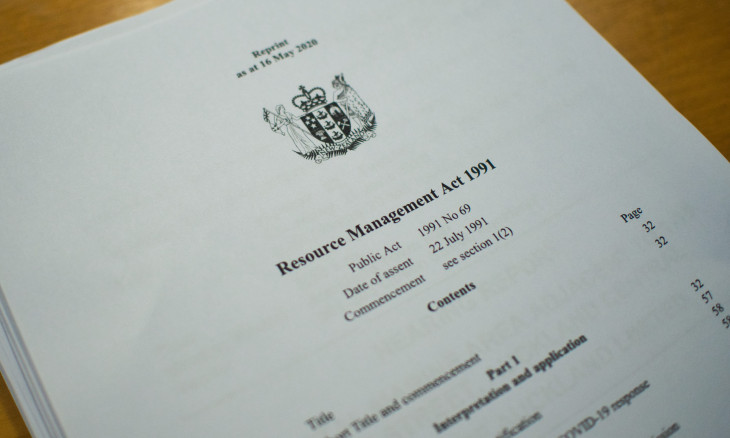Our goal is to restore diversity and take the gully back to pre-1840 flora and fauna

Local volunteers have been working in the gully since 2014, clearing the site of the usual Wellington suite of weeds including wattle, blackberry, ivy, old man’s beard, cathedral bells, montbretia, Darwin's barberry etc. and planting original species to supplement the resurgent native flora of māhoe and mamaku. We are also removing Karo and Pōhutakawa which are not native to the area. Our plants are sourced from the Forest & Bird Highbury Nursery and WCC Berhampore Nursery (unfortunately we cannot accept donated plants).
In 2022 we began work on a new lizard pad to attract native lizards back to the park. We run three traplines through the gully eradicating rats, mice and the occasional weasel.
Although relatively small in area the site is important to the ongoing 'Natural Pathways' corridor concept of our branch; a link in a chain of open space islands from Otari, through Zealandia to Central Park and south coast. It is situated between Central Park and Polhill Gully and is a roosting site for kākā, kererū and kārearea in the large, mature pines.
This Forest & Bird project partners with Wellington City Council under a MoU agreement, it has keen local interest and support. Its proximity to the CBD and recreational value makes it an attractive site for casual voluntary help.
Tūao | Volunteer
Assistance with planting, weeding, and releasing is always welcome. We work year-round, generally weeding over warmer months and planting in cooler, wetter months.

When: Working bees are held every Sunday from 2pm-4pm, weather permitting. There is no commitment to come every weekend, we welcome casual and regular volunteers.
We also welcome corporate volunteers on weekdays, please get in touch if you are interested in an event.
What's required: Volunteers require a moderate level of fitness as we often work on steep, uneven ground. We ask that you bring good sturdy footwear and gardening gloves, but all other tools can be provided.
To keep up to date with the project, follow our Facebook page.

Tāhuhu Korero | History
Tanera Park gets its name from Tanera Crescent which was named, along with Karepa and Apuka Streets, after three Māori residents employed by Ashton Fitchett on Fitchett’s Farm. This was a 100-acre dairy farm, also known as Ohiro Farm, that had been established by Ashton's father, John Fitchett, in 1852.
A mansion was built on the park in 1854 for dentist John Moffitt, which was later converted to the Ohiro Benevolent Home, then Central Park Hospital, before being demolished in 1975. Some of the concrete foundations still remain, with some of the steps up from Epuni St being the original from the 1850's
Part of Tanera Park and Maarama Crescent was once a small Te Ati-Awa and cultivation site, called Moe-i-te-ra or Moera for short. Moe-i-te-ra means “sleeping in the sun”, reflecting its north facing sunny location.
Elsdon Best describes Moera as “a small native hamlet on the hill at Maarama Crescent, so named because the place caught the very early rays of the sun, which shone on the hamlet ere the people awoke in the morning.”
The name Moera was subsequently transferred to a new suburb of Lower Hutt in 1933.
What can you do
If you see any nature of interest to you around the park and gully, please take a photo and upload it to iNaturalist. It will automatically be added to our project:
https://www.inaturalist.org/projects/tanera-gully-restoration-project.










